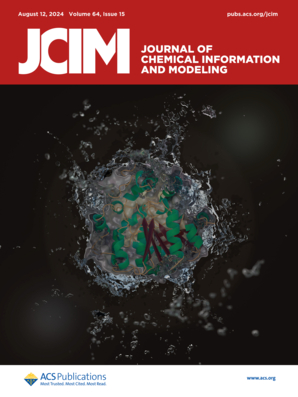Nikulenkov F, Carbain B, Biswas R, Havel S, Prochazkova J, Sisakova A, Zacpalova M, Chavdarova M, Marini V, Vsiansky V, Weisova V, Slavikova K, Biradar D, Khirsariya P, Vitek M, Sedlak D, Bartunek P, Daniel L, Brezovsky J, Damborsky J, Paruch K, Krejci L, 2025: Discovery of new inhibitors of nuclease MRE11. European Journal of Medicinal Chemistry. DOI: 10.1016/j.ejmech.2024.117226. full text
MRE11 nuclease is a central player in signaling and processing DNA damage, and in resolving stalled replication forks. Here, we describe the identification and characterization of new MRE11 inhibitors MU147 and MU1409. Both compounds inhibit MRE11 nuclease more specifically and effectively than the relatively weak state-of-the-art inhibitor mirin. They also abrogate double-strand break repair mechanisms that rely on MRE11 nuclease activity, without impairing ATM activation. Inhibition of MRE11 also impairs nascent strand degradation of stalled replication forks and selectively affects BRCA2-deficient cells. Herein, we illustrate that our newly discovered compounds MU147 and MU1409 can be used as chemical probes to further explore the biological role of MRE11 and support the potential clinical relevance of pharmacological inhibition of this nuclease.
Sethi A, Kumar J, Vemula D, Gadde D, Talla V, Qureshic IA, Alvala M, 2024: Sugar mimics and their probable binding sites: design and synthesis of thiazole linked coumarin-piperazine hybrids as galectin-1 inhibitors. RSC Advances 14: 36794-36803. full text
Sugar mimics are valuable tools in medicinal chemistry, offering the potential to overcome the limitations of carbohydrate inhibitors, such as poor pharmacokinetics and non-selectivity. In our continued efforts to develop heterocyclic galectin-1 inhibitors, we report the synthesis and characterization of thiazole-linked coumarin piperazine hybrids (10a–10i) as Gal-1 inhibitors. The compounds were characterized using 1H NMR, 13C NMR and HRMS. Among the synthesized molecules, four compounds demonstrated significant inhibitory activity, with more than 50% inhibition observed at a concentration of 20 μM in a Gal-1 enzyme assay. Fluorescence spectroscopy was further utilized to elucidate the binding constant for the synthesized compounds. 10g exhibited the highest affinity for Gal-1, with a binding constant (Ka) of 9.8 × 104 M−1. To elucidate the mode of binding, we performed extensive computational analyses with 10g, including 1.2 μs all-atom molecular dynamics simulations coupled with a robust machine learning tool. Our findings indicate that 10g binds to the carbohydrate binding site of Gal-1, with the coumarin moiety playing a key role in binding interactions. Additionally, our study underscores the limitations of relying solely on docking scores for conformational selection and highlights the critical importance of performing multiple MD replicas to gain accurate insights.
Dhiman D, Sethi A, Sinha R, Biswas S, Franklin G, Mondal D, 2025: Bioinspired design of DNA in aqueous ionic liquid media for sustainable packaging of horseradish peroxidase under biotic stress. Chemical Communications. DOI:10.1039/D4CC05803H. full text
We show that a combination of DNA and ionic liquid significantly increases the stability and activity of HRP and achieves a 4.8-fold higher peroxidase activity than PBS buffer. Also, HRP retains 84% of its activity in IL+DNA compared to 24% in PBS against trypsin digestion. Molecular modeling and spectroscopic studies reveal a protective microenvironment.




